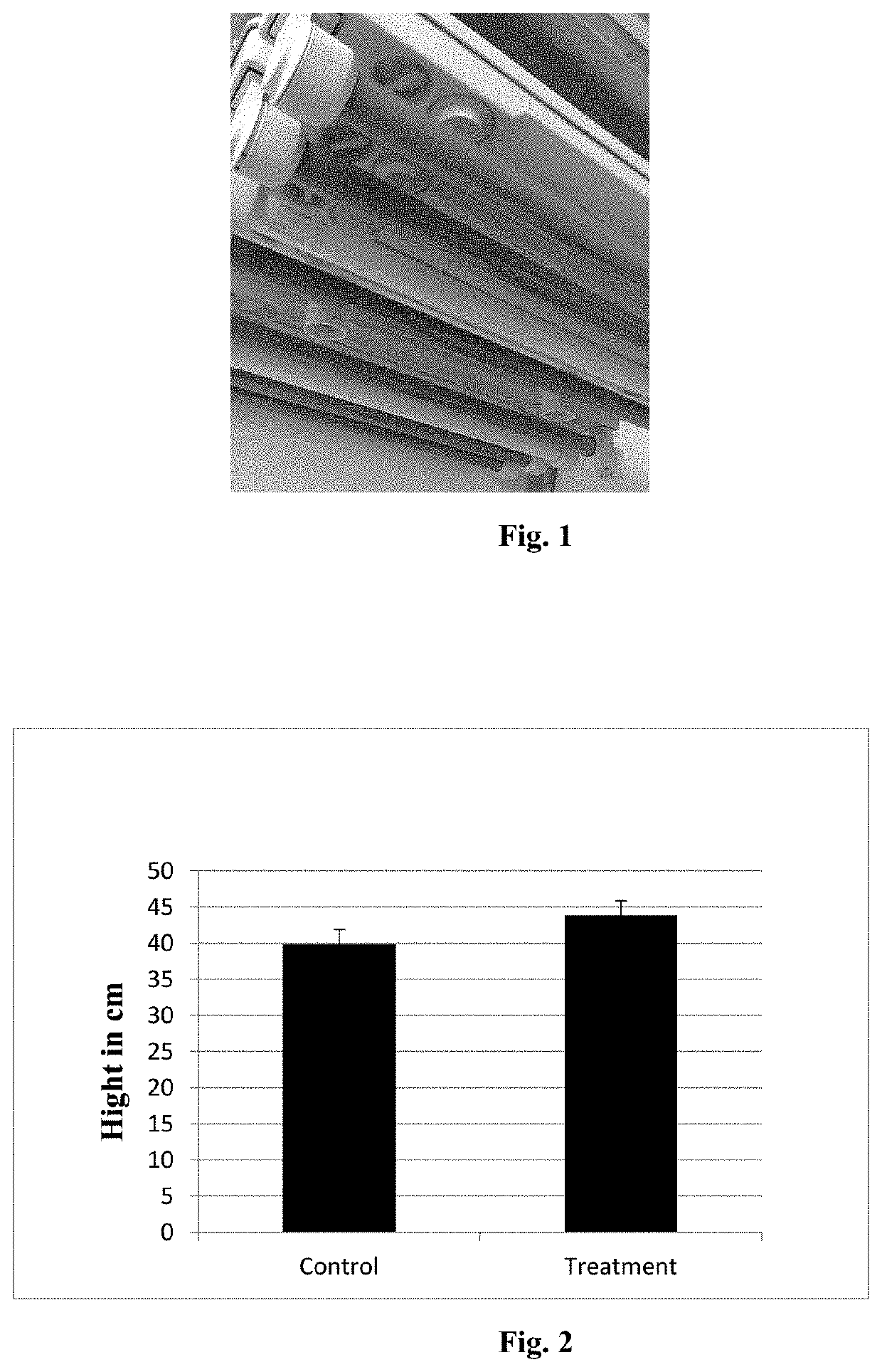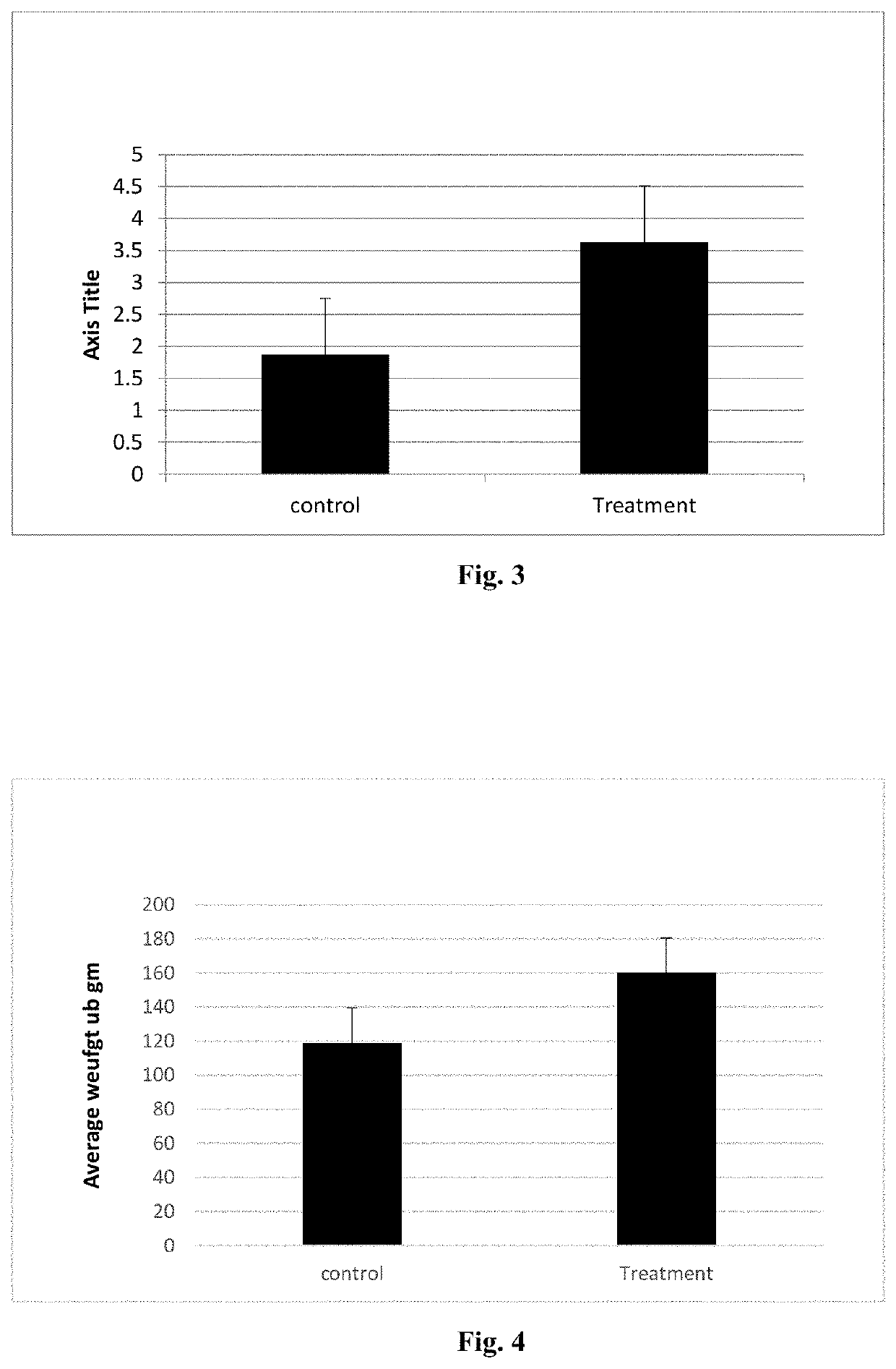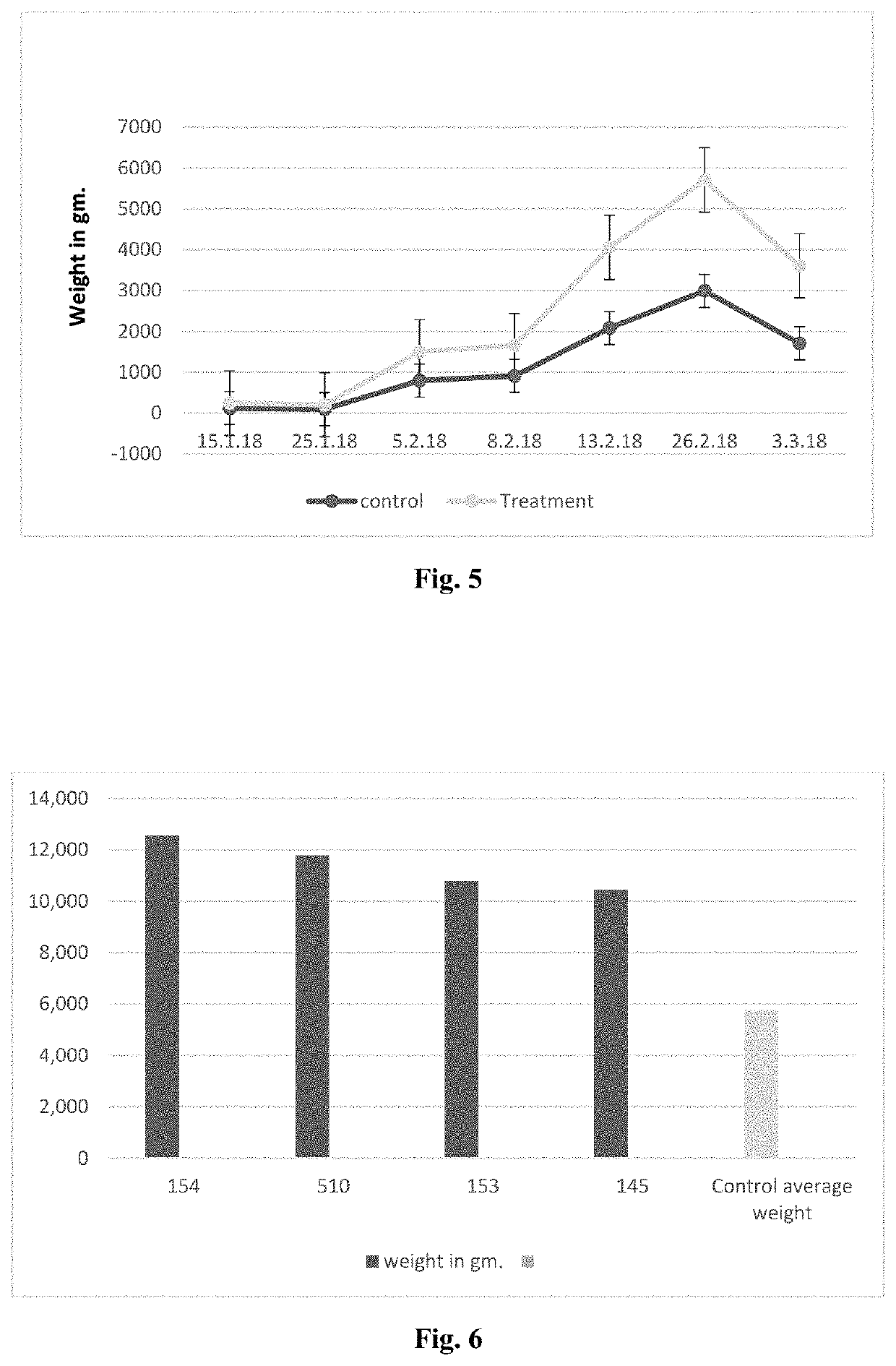Non-gm improved tomato crops and methods for obtaining crops with improved inheritable traits
a technology improved traits, which is applied in the field of non-gm tomato plants, can solve the problems of limited scope of area expansion and silence of prior art, and achieve the effects of increasing the number of tomatoes, increasing yield capacity, and increasing energy production efficiency
- Summary
- Abstract
- Description
- Claims
- Application Information
AI Technical Summary
Benefits of technology
Problems solved by technology
Method used
Image
Examples
embodiments
[0122]In some embodiments, there is provided a method for producing a non-genetically modified (non-GM) tomato plant and / or a harvestable part thereof, exhibiting at least one inheritable improved trait as compared to a control population of plants of the same plant cultivar or line, the method comprising the steps of:
[0123](a) providing a population of a cultivar or line of tomato seeds or plants;
[0124](b) exposing said population (a) of a cultivar or line of tomato plants to a predetermined light treatment by irradiating with artificial light, partly in the presence of ambient daylight, every day for a duration of 2 to 6 weeks from sowing, preferably for 30 days from sowing, wherein the predetermined light treatment consists of irradiating with artificial red light of wavelength in the range of from about 600 nm to about 700 nm for a period of about 60 minutes, starting about 30 min. before sunset in the presence of daylight, and continuing about 30 minutes after sunset.
[0125](c) ...
example 1
ato Plant Treatment (F1)
[0153]Treatment procedure and results of stage F1 (first generation)[0154]1. A population of 150 plants was provided and treated in the F1 treatment. After 30 days of treatment, about 20% of the plant's responded favorably to the treatment (one hour of red irradiation for half an hour before sunset and half an hour into the night, for one month). A few plants responded very well, some had moderate response and the majority did not respond at all in the first treatment stage F1. About 30 (20%) plants exhibiting at least one improved trait were selected. The first selection was based on plant height, volume (biomass) and vigor.[0155]2. The selected plants were transferred to the commercial greenhouse, and planted there until completion of their growth cycle. During this period phenotype measurements were taken.[0156]3. At the end of the growing cycle, tomatoes were collected from each plant, counted and weighted.[0157]4. 3-4 best plants exhibiting an improved t...
example 2
mato Plant Treatment (F2)
[0160]Treatment of 150 plants grown from seeds of F1 treatment began on the day of sowing.
[0161]The treatment included red irradiation in the evening, for half an hour before sunset and half an hour into the night. Red fluorescent light lamps of wavelength between 620-750 nm (see FIG. 1) situated at about 50-60 cm above the plants were used for irradiation. The luminous flux was between 200-3000 lux.
[0162]The 150 plants were irrigated 5 minutes twice a day, altogether 400 mm per growing cycle. Each pot was irrigated separately.
[0163]The treated group of plants included 89 plants (59% of the initial population provided of 150 plants) and the control group included 50 plants. The selected plants were grown in 12 cm pots arranged on two benches, four pots in a row on each bench.
[0164]18-20 treated plants exhibiting an improved trait (in respect of the yield) (20-22% of the selected 89 plants or 12-13% of the initial 150 plants) were selected and taken to the co...
PUM
 Login to View More
Login to View More Abstract
Description
Claims
Application Information
 Login to View More
Login to View More - R&D
- Intellectual Property
- Life Sciences
- Materials
- Tech Scout
- Unparalleled Data Quality
- Higher Quality Content
- 60% Fewer Hallucinations
Browse by: Latest US Patents, China's latest patents, Technical Efficacy Thesaurus, Application Domain, Technology Topic, Popular Technical Reports.
© 2025 PatSnap. All rights reserved.Legal|Privacy policy|Modern Slavery Act Transparency Statement|Sitemap|About US| Contact US: help@patsnap.com



